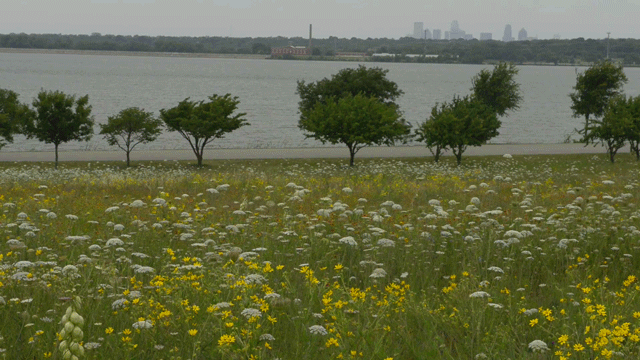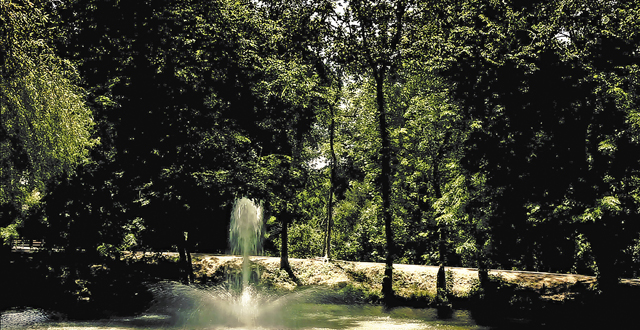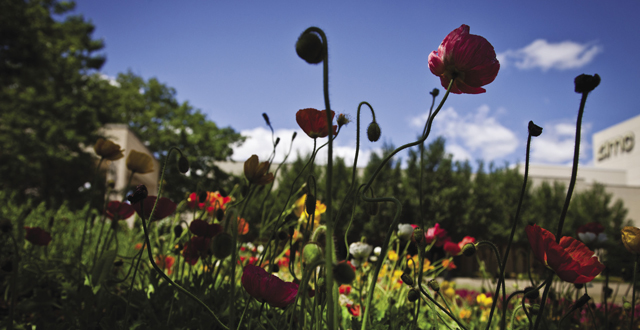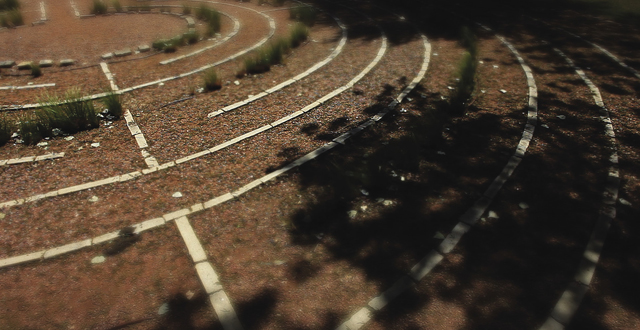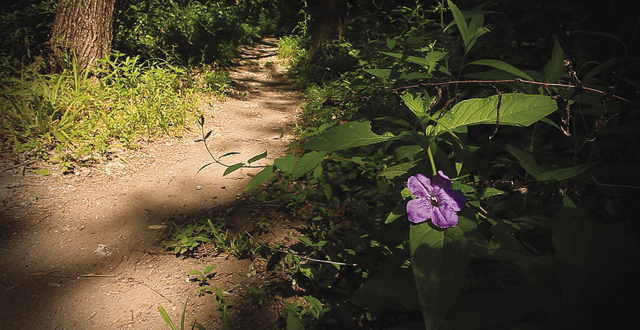While it might not rival New York or Chicago’s urban pandemonium, Dallas is a bustling city with its share of high-stress professions, crowded scenes, road rage and those intermittent heartaches to which no human is immune. If you know where to look, you’ll find our neighborhood offers respite from the daily grind or occasional trauma in the form of peaceful nooks, comforting crannies and uplifting activities. Here, find a guide to our readers’ and our own favorite escapes.
White Rock Lake
There are those who tap their inner calm sitting still in a quiet place. Others’ serenity emerges during strenuous repetitive activity. For both types, as well as those in the middle, White Rock Lake offers solace.
For pedestrians and cyclists, a 9.2-mile paved trail encircles the lake (that trail connects to White Rock Creek Trail, which runs through Lake Highlands, to the Cottonwood Trail and North Dallas). Trail-using trekkers — from hardcore marathoners to sauntering birdwatchers, cyclists and in-line skaters — pass the historic Bath House Cultural Center (521 E. Lawther), the oft-gushing spillway, the old filter building, a dog park at 8000 Mockingbird (which is undergoing close to $1 million in improvements), scenic bridges, piers, and enviable multi-million-dollar residences, among other sights.
White Rock area resident Dave Dozier circles the lake frequently. He’s done it some 9,000 times, he guesses. While he finds solace during quiet mornings, he finds it most comforting on busy Saturdays.
[quote align=”right” color=”#000000″] Jogging is the path to peace and happiness, insists Dozier, a former competitive runner who now ambles. No matter the speed, “a lot of lives have changed out here.”[/quote]“I stop and talk a lot. I know everyone out there,” Dozier says. Jogging is the path to peace and happiness, insists Dozier, a former competitive runner who now ambles. No matter the speed, “a lot of lives have changed out here,” he says.
West of the lake, step off the beaten path and explore a circuit of nature trails at the Old Fish Hatchery, whose entrance you’ll find between the spillway and the pump station (2810 White Rock).
Or leave land entirely and savor the water via sailboat, kayak or canoe. Those who don’t store a vessel at the boathouse or the sailing club can rent, inexpensively and hassle-free, from local outfitters such as White Rock Paddle Co., located lakeside at Mockingbird and Buckner.
Advocate reader Julie Burch Webber says she recently tried canoeing for the first time, paddling under the Northwest Highway bridge.
“Felt like I was not in the middle of Dallas. Beautiful, and great spot for checking out a variety of bird species,” she notes.
One Lake Highlands engineering hobbyist, Dean Smith, built his own steamboat for exploring the lake and creek. The architect by trade is happiest when his boat is humming and he’s on the water. “I’ve been around White Rock Lake for many years, but it wasn’t until [I built the steamboat] that I’ve been on the lake, seen it from this perspective,” Smith says, his gaze on the water. “This is the part I like.”
Trail and woods near Lake Highlands recreation center
Despite housing a high school populated daily by some 2,000 students and staff, the Lake Highlands North area offers quick, quiet and free getaways. Attached to a newly spruced-up playground at Faircrest and Church is a winding path that, about .1 mile in, features a spouting fountain. On a quiet morning (go before 8 a.m. or after 9:15 a.m. when school is in session) you’ll encounter only sounds of trickling and chirping and perhaps the mumblings of a fellow walker or two. The more adventurous and less allergy-prone can access the bubbling creek behind the trees from various manmade pathways — among the flora you’ll find myriad birds and spot the occasional rabbit.
Also of note, across Church and north of Lake Highlands High School, a freshly paved concrete trail is open. It runs along the north side of the school, behind the track and baseball fields, and continues to Fernald. It doesn’t offer the natural thickety landscape of the other nearby trails, but it is soothing to hike or bike without needing to dodge crowds and cars.
Watercrest Park
Dallas Park and Recreation Department authorities have compared Watercrest Park at Lake Highlands Town Center (7100 Wildcat Way) to the picturesque Lakeside Drive in Highland Park. “This is really a first-class linear greenbelt,” says Willis Winters, who, as the park department’s director, is an authority on the topic. Sprawling behind the new Haven apartments at Walnut Hill and Skillman, the paved walking trail at Watercrest flanks a little lake and is adorned with sculptures from local artists.
CenterPark Garden at NorthPark Center
Drawing millions of visitors each month, our neighborhood’s nearest shopping mall may not seem like an ideal locale to find your Zen. Loyal patrons know, however, that NorthPark is different. With its clean modern lines, impressive fine art collection and lush green space, the place has become nationally revered for being more than a mall. The 1.4-acre garden at the retail giant’s center features canopies of 45-year-old live oaks and red oaks (90 trees in all) as well as colorful blooms. It’s common to find people lounging on the lawn with a blanket and a book. Kristen Gibbins, NorthPark’s publicist, says the quietest times at the mall are during weekday afternoons. CenterPark Garden isn’t the only place to escape the crowds. “There’s a hidden spot within the food plaza,” Gibbins says.
Right in the middle of the mall’s busy food court is the compluvium, an outdoor eating area enclosed in glass and open to the sky.
Rocking M Stables
In 1955 Tommy Ernest Mayes, a devoted rider, purchased 10 acres on Dallas’ peripheries. He dreamed of a laid-back ranch where he could relax on his front-porch rocking chair overlooking his pasture and horses. Over the years, our neighborhood sprung up around the Rocking M farm (7807 Fair Oaks). In ’78 the City of Dallas bought most of the land in order to build the Walnut Hill bridge. Remaining is an acre and a half of peaceful, rural terrain — stables housing some 60 horses — in the middle of a growing metropolis. Mayes’ grandson Michael, who now owns the place, says his grandfather instilled in him a reverence for nature and horses. Mayes labored over the years to turn Rocking M into a first-rate equestrian facility offering boarding and training for horses, and lessons and camps for humans.
[quote align=”left” color=”#000000″]A cyclist might find herself keeping pace alongside the paint horse named George Henry and the Lake Highlands woman who rides him almost daily.[/quote]For those fortunate enough to board their own horse at Rocking M, riding along the White Rock Creek trail toward White Rock Lake offers quintessential soul quieting. “A lot of our boarders are from Lake Highlands,” notes Mayes. “I live across the street,” a woman who is happily hosing down her animal chimes in as we pass.
Of course, boarders come from all around the city and the affluent Park Cities — after all, one must have a disposable income to break into the sport of horseback riding or dressage, the equestrian sport in which Rocking M specializes.
A stable at Rocking M runs $600-$800 a month. Mayes and his staff feed and water the horses, but, ideally, clients regularly ride and exercise their own animals.
For slightly less committed families, the summer is an especially good time to enroll in lessons and camps, according to Yvonne Kusserow, Mayes’ wife and a horse-riding master (literally, she has a master’s degree in horse riding from a German university). The sessions teach horsemanship, which means learning everything about the horse — what they eat, names of equine body parts, required gear, rules of safety and so forth. They progress to advanced classes and training in dressage and Olympic-level sport.
Even for neighbors not directly involved with the ranch, is it difficult to deny the aesthetic benefits its presence lends to our area.
On a summer evening, for example, a cyclist might find herself keeping pace alongside the paint horse named George Henry and the Lake Highlands woman who rides him almost daily.
A jogger might find herself trotting alongside Kusserow and her majestic steed Royal Falcon. Those trails, notes Kusserow, are where the horses find solace. “I like being in the [ring], practicing, but the horses, they need this for their peace of mind.”
Richland College campus
This Dallas community college (12800 Abrams at Walnut) plays host not only to a population of students from varying walks of life, but also to residents of the surrounding neighborhood looking for a relatively quiet retreat or place to exercise.
Our pursuit of peaceful places led us straight to the tranquility labyrinth situated at Richland’s northeastern reaches. A labyrinth, unlike a maze, has no wrong turns and is employed in various religions as a meditation tool.
[quote align=”right” color=”#000000″]”As you walk the winding path back out, be strengthened for your return into the world …”[/quote]There are no rules for how to walk the labyrinth, but its creators suggest you “clear your mind and become aware of your breathing. Find the pace your body wants to go. When you reach the center, take time for illumination, reflection or meditation. As you walk the winding path back out, be strengthened for your return into the world …” Near the labyrinth is a symbolic water pump honoring the Walton family, who owned the land before the college was erected in 1966.
The east side of the rolling campus is a state-of-the-art soccer complex that hosts the Dallas Cup each spring. When not in use, the fields offer a lush green parkland for impromptu ball games, dog walking, trail running — a jogging/hiking path expands behind a wall of trees north of the fields.
South of the college is a three-quarter-mile asphalt track, which passes public-access tennis courts and a serene duck pond. It is common to see new ducklings and goslings each spring, as well as turtles and the occasional snake sunning on the pond-side concrete. Swans, gulls, rabbits and skunks also inhabit the preserve around the property.
Harry Moss Park off-road trail
Visible from Greenville are the Moss Park soccer fields (7601 Greenville), which are at the heart of one of Lake Highlands’ woodsiest expanses. South of the soccer fields is an entrance to the Harry Moss Park Trail, the product of a partnership between the City of Dallas and the Dallas Off Road Bicycle Association. It took shape in fall 2010, and it includes more than five miles of dirt paths winding through towering trees, traversing quaint bridges (which, according to DORBA members, are made 100 percent from stuff found at the trail) and bordering rippling White Rock Creek. Posted outside the trailhead is signage including information about the five color-coded tracks that make up Moss Park’s trail system. It tells visitors, for instance, that the purple loop is 1.54 miles and the white is just a quarter mile featuring easy terrain for tots and pets. After a storm the area can get its fair share of trash buildup washed down from upstream, but there are several stewards of the trail that help maintain cleanliness, trim trees and weeds, and champion the rules such as “keep dogs on leashes,” “pick up after them” and “no littering.” It is perfect on a summer morning or evening as the setting or dawning sun pokes through the treetops — unless you have allergies, in which case you should stick to the nearby concrete trails that are in a more open, less wooded area. Turn into Buckeye Beverages parking lot. Continue past the metal gate. The trail is to the right.
Lucky Dog Books
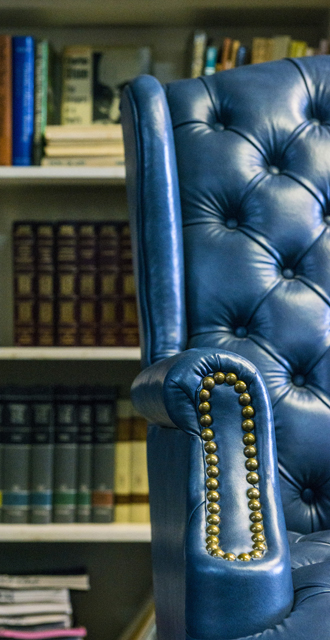 “A bell jingled overhead. The mild, spicy smell of old books hit him, and the smell was somehow like coming home,” wrote Stephen King in The Waste Lands.
“A bell jingled overhead. The mild, spicy smell of old books hit him, and the smell was somehow like coming home,” wrote Stephen King in The Waste Lands.
If your preferred mode of decompression involves curling up with a book — a real, paper-and-ink page turner — you’ll get lost, in the most pleasant manner, inside Lucky Dog Books (10801 Garland).
[quote align=”left” color=”#000000″]“A bell jingled overhead. The mild, spicy smell of old books hit him, and the smell was somehow like coming home.”[/quote]The building is small and welcoming. Inside, though, room after room, at least 10 of them, offer books organized by topic then author. Comfy chairs in crannies beckon visitors to loiter and peruse the pages they’ve heretofore plucked from the endless shelves.
Once you’ve wrested yourself from the cozy couch in, for example, the poetry reading room, check the wall calendar for book signings, discussion groups, workshops and writing classes, and purchase your picks with cash, plastic or store credit, which you can obtain by donating your old books, records and media.

